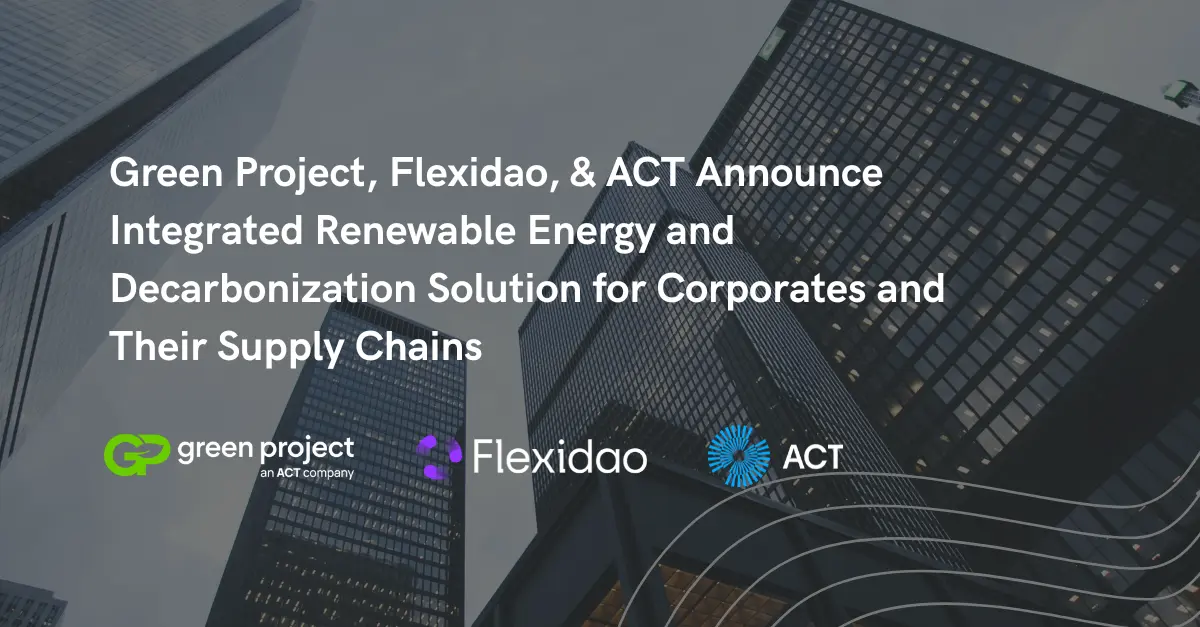Displacing Emissions: The Role of Market Boundaries in Enhancing Voluntary Corporate Renewable Energy Impact
Displacing Emissions: The Role of Market Boundaries in Enhancing Voluntary Corporate Renewable Energy Impact
How market boundaries can enhance voluntary corporate renewable energy impact and effectively displace emissions.
Download the full Report
Responsible: FlexiDAO S.E.S S.L
Finality: Download of "Displacing Emissions: The Role of Market Boundaries in Enhancing Voluntary Corporate Renewable Energy Impact".
Rights: You have the right to access, rectify, and ask us to delete your data.
*Acknowledgment: Inclusion on this list does not necessarily indicate endorsement of the report’s findings.
Over the past decade, the Greenhouse Gas (GHG) Protocol has played a crucial role in advancing the corporate renewable energy voluntary ecosystem through its Scope 2 market-based guidelines (guidelines around emissions accounting from electricity that companies have purposefully chosen to procure).
Notably, voluntary reporting initiatives like CDP and RE100, which focus on recognizing environmental leadership, have adopted the GHG Protocol's guidelines. Existing and upcoming mandatory reporting systems, like the European Sustainability Reporting Standards (ESRS) and the U.S. Securities and Exchange Commission's Climate Proposal, also build their directions on the GHG Protocol's specific recommendations for Scope 2 emission accounting.
This paper examines the GHG Protocol's current guidelines for Scope 2 emissions, which define market boundaries relatively flexibly. It discusses how reporting frameworks can interpret these guidelines in ways that could potentially restrict the options available to companies looking to buy clean energy. This is at the expense of the pace at which corporations can contribute to global power grid decarbonization.
The study uses publicly available datasets to primarily focus on the challenges that arise from RE100’s interpretation of market boundaries, which has led to mandatory in-country procurement guidance in some geographies—procuring renewable energy in the same country where consumption occurs.
Key findings of Flexidao’s paper include:
1. Analyzing the renewable energy landscape of Japan, India, South Korea, and Singapore, the study estimated a significant trend of trapped renewable energy capacity in these countries (e.g., potential renewable energy (RE) that could have been procured by corporate energy buyers yet was not due to economic barriers).
2. If unlocked, this trapped capacity could lead to a potential increase in generation of 76.5 TWh per year and avoiding 35 Mt CO2e annually1,. To put this in perspective, increasing RE generation by this amount could take 7,6 million cars off the streets every year, which is comparable to the total number of cars in both San Francisco and Chicago combined. 2
3. While companies find local barriers and advocate for policies to create more favorable conditions as soon as possible, they have fewer options to take short term action as the reporting framework does not reward them for investing elsewhere.
4. These market boundary guidelines may not consider sufficiently the time value of carbon, for which, in light of urgency in meeting the Paris Agreement’s Goals by 2050, decarbonizing today has more value than decarbonizing later.
5. Companies must still implement the processes, tools, and suitable data to disclose information with the granularity required by in-country market boundaries.
To address these challenges and accelerate corporates' contribution to power grid decarbonization, the study proposes:
Whereas local procurement should be a priority, and organizations should advocate for policies that enable this practice, a ranking system for in-country procurement feasibility is recommended to help companies better navigate local barriers and encourage local renewable purchases. It should indicate the hierarchical market boundary guidance companies should follow depending on each location’s score - the higher the score, the stricter the rules, and vice-versa.
Introducing a new consequential emission-matching metric alongside location-based and market-based emissions. Such a metric would take into account the annual emissions avoided and the contribution of all eligible RE purchases. This would help ensure that, following the feasibility ranking and hierarchy proposed above, investments are directed toward the dirtiest grids with the highest potential for displacing emissions . This builds on a series of proposals included in the letter sent by the Clean Air Task Force to the GHG Protocol leadership.
The analysis captures the current landscape and encourages a deeper consideration of the outcomes of inaction. Overlooking the barriers outlined could intensify the disparity in global renewable energy access and potentially pose additional challenges in achieving the Paris Agreement’s goal by 2050.
1. The rise is driven by the increasing divergence between total reported electricity consumption and RE coverage in South Korea, which denotes unaddressed challenges in the market.
2. The U.S. EPA estimates that the average passenger vehicle emits about 4.6 metric tons of CO2 annually (this can vary depending on vehicle type, fuel efficiency, and driving habits). The emissions are based on an average gasoline-powered vehicle and typical driving patterns of around 11500 miles (approximately 18500 km ).








